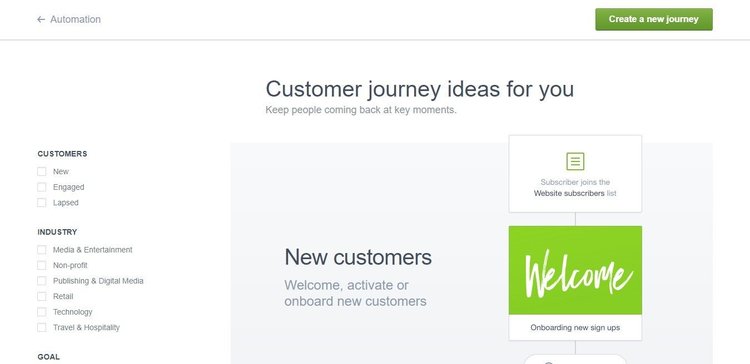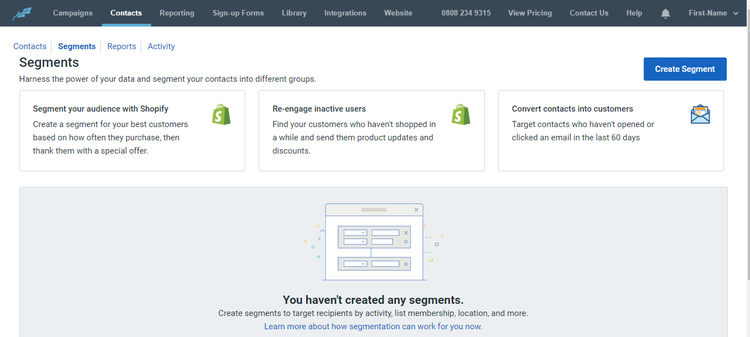As a business owner, ongoing email communication with your customers is essential. You need to let them know about upcoming sales and promotions, send out order updates, or even touch base with a personalized birthday message.
At the same time, composing each one of these emails one by one would be a daunting, time-consuming task, especially as your customer base grows. That's why it's never too early to begin your email automation efforts using the email marketing tips below.
Overview: What is email automation?
Automating emails allows you to send customers and subscribers emails based on predefined events or "triggers." These can include an account setup welcome message or other information, including an order confirmation, order shipped/delivered, sales events, suggested products, or requests for product reviews.
What are the benefits of automating your emails?
Not only will email automation save you the time of individually composing and sending each message, but the personalization options available and the recipient metrics generated will also help you maintain and grow your customer base.
1. Customer relationship management
Most businesses spend more time trying to acquire new customers than retaining the ones they already have, even though it costs up to seven times more to attract a new customer than to keep an existing one.
Automated emails will keep you front and center with your current customers by providing the timely information they want.
2. List segmentation
The days of the email blast, a single email sent to everyone in your contact management system, are long gone because one size does not fit all.
Instead, you can combine automated email campaigns with customer segmentation to target recipients by gender, location, education level, buying patterns, or other demographic information. This is not limited to online retail sales but also applies to business-to-business (B2B) email marketing.
3. Performance metrics
Marketing used to be a black box: You paid for newspaper ads or sent out direct mail pieces, but who really knew how effective they were, or weren't? Email marketing has changed all that. Now you can track metrics, including how many emails were opened, forwarded, and which links back to your site were clicked.
How to set up email automation for your small business
The key to effective email automation is planning, everything from selecting the best email marketing software, all the way to choosing which metrics to focus on. By being thoughtful upfront in your approach to setting up your email automation, you'll produce actionable results more quickly and save time in the future.
Step 1: Choose an automated email service provider
The first thing you'll discover is that there are dozens of companies that say they provide the "best" email marketing services. While many of their features are similar, you'll want to do some careful research, hence, our suggested options below, to determine the right fit for your needs.
Pro tip: You probably don't need an enterprise software solution with all the bells and whistles that costs hundreds of dollars a month right off the bat. Instead, choose a provider that will allow you to start small and then scale up as your needs grow.
Step 2: Formulate your email strategy
In addition, you want to begin with a simple email strategy. That is, you don't need to have half a dozen or more different emails you send out from the get-go. Instead, choose one or two types of triggers and resulting messages to focus on as you become familiar with the ins and outs of the software you're using.
Pro tip: One standard message you'll want to send out is a welcome email when a customer sets up an account at your business. In addition, include a coupon/discount for them to use so you can begin generating follow-up sales from existing customers.
Step 3: Map out your workflow
Quality and consistency are critical to establish and maintain credibility with your customers. That includes everything from how to start an email, to its layout and design, to careful proofreading. Plus, you'll need to decide exactly who will be responsible for completing each element.
Pro tip: Use Gantt charts, which can be produced with most project management software, to build a visual representation of the workflow for every type of email, identify who is responsible for each task, and create a production timeline with milestones.
Step 4: Build segmented lists
Both customer and market segmentation are key to maximizing the return from your overall email list. You don't pay much attention to direct mail pieces that show up in your physical mailbox because they're hardly ever that relevant.
List segmentation will allow you, however, to personalize emails to groups of customers based on their prior behaviors, preferences, and demographics.
Pro tip: When it comes to segmented lists as opposed to a welcome email that is sent out uniformly, focus on your customers who have made the most purchases. Research shows that each successive purchase by a customer increases the odds they will make another one in the future.
Step 5: Analyze the metrics
Email marketing automation also allows you to collect a variety of different information about the recipients of your emails and how they interact with them. Basic metrics include open rates, bounce rates, clickthroughs, and forwards/sharing.
Pro tip: A/B testing allows you to test two iterations of the same thing to determine which one performs better. For example, you can use two different email subject lines for the same email to determine which one results in the highest open rate. Then, you can model future subject lines on the one that was most successful.
The best email marketing software for setting up email automation
It's easy to become overwhelmed by all the email services on the market, so here's a brief overview of some popular and highly rated providers. Plus, when you take a look at their sites, you'll find a variety of email marketing examples that can provide ideas and inspiration for your own efforts.
They also have resources on effective email formats and how to create an email newsletter.
1. Mailchimp
Mailchimp is an industry leader suitable for both novices and experienced marketers. You can choose from automation templates that include first-time customer welcome, customer loyalty rewards, order notifications, abandoned shopping cart, purchase follow-up, and customer engagement.
There's a free option all the way to a $299/month premium plan.

Mailchimp offers a variety of email automation templates. Image source: Author
2. Campaign Monitor
Campaign Monitor is also suitable for beginners and experienced marketers, but its interface is a bit dated compared to its competitors. It does offer robust email automation, which it calls "journeys," that can be set up even by novices, thanks to a series of questions based on industry, goals, and customers to target.
Plans range from $9 to $149/month.

Campaign Monitor setup page for automated emails, which it calls "journeys." Image source: Author
3. Constant Contact
Constant Contact offers an impressive combination of usability and functionality. At the same time, however, its list segmentation capabilities are limited, and unlike Mailchimp, there's no free option for you to try out. Plans start at $20/month.

Constant Contact offers three basic list segmentation options. Image source: Author
Begin your email automation now
Email automation is not a business requirement you might consider implementing at some point in the future. Instead, small business email marketing is a necessity you need to begin using as soon as possible in order to reap its tangible rewards.
Our Small Business Expert
We're firm believers in the Golden Rule, which is why editorial opinions are ours alone and have not been previously reviewed, approved, or endorsed by included advertisers. The Ascent does not cover all offers on the market. Editorial content from The Ascent is separate from The Motley Fool editorial content and is created by a different analyst team.